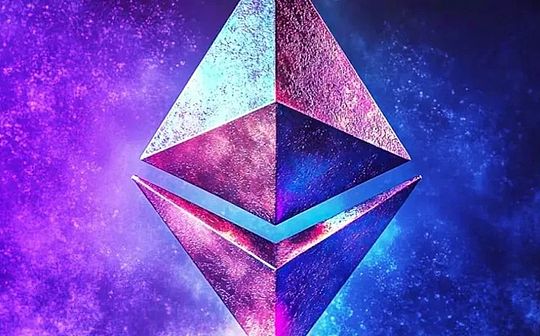
Author: Impossible Finance; Compiled by: Shenchao TechFlow
Decentralized Physical Infrastructure Networks (DePINs) represent a transformative approach to building and scaling infrastructure networks that are divided into two main types: physical and digital networks.The DePIN project is united by a core concept and aims to build a more open, decentralized and transparent infrastructure network in various fields.Compared with the traditional web2 model, this method has obvious advantages, mainly for the following reasons:
-
Resource utilization and cost efficiency.The DePIN project utilizes two key facts to gain this key competitive advantage: leveraging existing underutilized equipment, and reducing upfront costs and risks for new hardware investors through token incentives and already acquired demand.
-
Localized service provision: Distributed resources within the DePIN framework are good at understanding and meeting the specific needs and needs of the local market.For example, in the decentralized cloud gaming framework, identifying regional gaming preferences can provide popular on-demand games, thereby enhancing service flexibility and user satisfaction.
-
Reliability and Reduce the Risk of Failure: Decentralized networks inherently reduce the risk of single point failure, thereby improving the reliability and flexibility of the services provided.
-
Accelerate innovation: The decentralized and permissionless nature of the DePIN network promotes the rapid development of innovation.The further alignment of a common goal (and assets) behind multiple parties has inspired third-party development.
In 2023, the DePIN field experienced explosive growth, with more than 755 projects and a market capitalization of US$32 billion.The surge highlights strong demand for decentralized infrastructure and investor confidence in it.It is worth stressing that the service demand of generalized computing structures is on the rise, with utilization rates of 40-70% in the past year.This makes the sub-industry the highest-revenue producer in the DePin sector, achieving an annual revenue of $27.5 million in 2023.
In addition, it is worth noting that the growth in the GPU computing field surpasses DePin.Currently, the demand for processing power exceeds the available supply, driven mainly by emerging technology fields such as artificial intelligence (AI), telecommunications and cloud gaming, which require a lot of computing power.This issue is driving global competition to obtain GPU resources dominated by companies such as Meta, OpenAI, and Alibaba; the focus is mainly on processors with the highest performance level, especially the H100 GPU developed by Nvidia.
Therefore, as the leader in this trend, the North American GPU cloud market is expected to grow rapidly from US$3.2 billion in 2023 to US$25.5 billion in 2030, with an annual compound growth rate of 34.8%.
Project Overview
Aethir Cloud is a decentralized platform that connects computing processing service providers and consumers, focusing on compute-intensive applications that rely on GPU hardware, aiming to be an aggregator of mass GPUs.
In terms of GPU computing supply, Aethir Cloud consists of a network of enterprises, data centers, miners and retail GPU providers.In terms of GPU computing requirements, Aethir is targeting the enterprise segments of the following verticals: AI training, AI inference, gaming and virtual devices (mostly mobile phones).
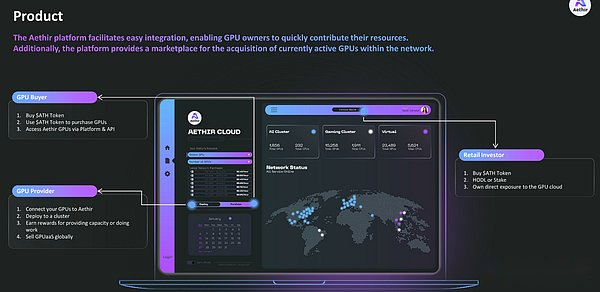
One of the key innovations that enable Aethir’s strategy to meet the needs of the enterprise’s market is the resource pool, which brings scattered contributors into a unified interface to serve large customers around the world.A key implication of resource pools is that GPU providers can freely connect or disconnect the network, allowing data centers with idle hardware to participate in the network in the event of downtime.This flexibility brings higher utilization to GPU providers while allowing Aethir to offer lower prices to its consumers.
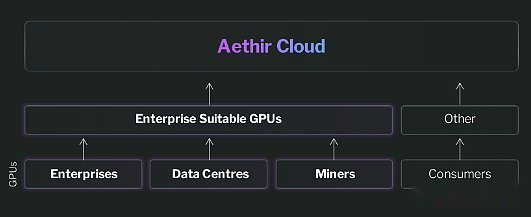
In addition, the aethir fit with the web3 spirit and the launch of the $ATH token will enable network participants to jointly own the platform and reduce financial risks to network participants in the early stages.This will allow Aethir to scale rapidly, especially in the early stages of its life cycle.
The core of the Aethir ecosystem runs on three critical backend infrastructures that are critical to operations:
-
Container: As the basis of the Aethir network, containers are the actual location for cloud use.It acts as a virtual endpoint, executing and rendering applications (for example, rendering games for players, performing inference tasks for AI consumers, and powering virtual phones).The purpose of containers is to ensure that the cloud experience is instant and responsive, providing a “zero latency” experience.This is achieved by transferring the workload from the local device to the container (e.g., transferring all game execution and command processing).
-
Inspector: Inspector ensures the integrity and performance of containers within the Aethir network.Verifying container specifications provided by container providers is critical to maintaining the quality of service on your network.
-
Indexer: As the core of the Aethir network, the indexer matches consumers with suitable containers, ensuring the rapid launch of cloud applications and services.The goal is to provide a “second” service – the transition from consumer requests to actual delivery (e.g., player requests to the game screen) should occur in the shortest possible time.This requires concise signaling and efficient scheduling.
These three basic elements (containers, inspectors and indexers) jointly ensure the smooth operation of the Aethir ecosystem.More information about these three key characters can be found in their gitbook.
Key Value Propositions for Aethir Ecosystem Participants
GPU Supply: Existing Infrastructure Providers
User example: telecommunications companies, hardware-intensive digital enterprises.
User pain points: Underutilized hardware.
Aethir’s Value Proposition:
-
Selling hardware capacity through GPUaaS mode to improve utilization.
-
Achieve global coverage by pooling resources with the Aethir network and achieving enterprise-level contracts of economies of scale.
-
Provide flexible terms for hardware operators seeking to connect to the network.
-
Token incentives reduce the risk of capital expenditure.
GPU Supply: New Infrastructure Investors
User example: Mining infrastructure investors.
Aethir’s Value Proposition:
-
Contact corporate customers worldwide.
-
Ecosystem supports, simplifies and assists operations.
-
Reduced risk of capital expenditure:
-
Ability to make incremental investments.
-
Due to serving global demand and receiving token rewards, network utilization is high.
-
Higher returns: Get service fees + token rewards.
GPU Supply: Retail Contributor
User example: Retail user with idle hardware.
Aethir’s Value Proposition:
-
Rewards are gained for contributing GPU processing power to the network.
-
Hold/bet $ATH to directly gain growth in the Aethir ecosystem.
-
Run the inspector node and receive rewards for contributing network decentralization and service quality.
GPU Consumers
User Type:
-
AI training
-
AI inference
-
game
-
Virtual computing
Aethir’s Value Proposition:
-
Improve performance
-
Low latency global service
-
Local calculation options
-
High-performance platform and API integration
-
Competitive and dynamic pricing, further reduced with adoption and scale.
-
Global coverage, huge and dynamic supply.
Business Model
Aethir acts as a market and aggregator, facilitating connectivity between supplier-side players such as node operators and GPU providers and users and organizations from compute-intensive industries such as artificial intelligence, virtual computing, cloud gaming and cryptocurrency mining..By providing institutional and retail users with access to these computing resources, Aethir provides a cost-effective alternative to traditional Web2 rivals and competitors.Revenue generation within the Aethir ecosystem follows a structured model in which 20% of the service fee is denominated in $ATH tokens and is applicable to payments paid by customers to suppliers.Additionally, Aethir receives 5% of the total $ATH agenda issuance as part of its indexer’s grant and operational program.To ensure fairness and competitiveness, Aethir allocates 50% of the total ATH tokens to token incentives, benefiting node operators and supplier entities, ensuring the attractiveness of annual interest rates to enter emerging ecosystems, and the overall long-term ecosystemSustainability.
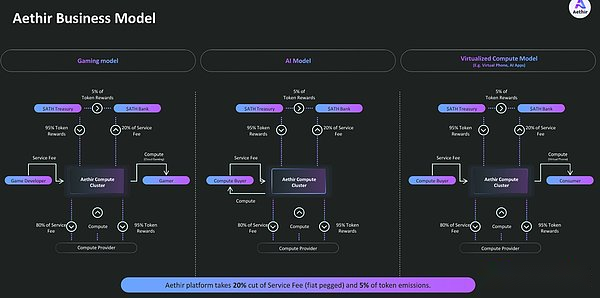
Node operators within the Aethir ecosystem have multiple revenue generation channels, divided into three forms of rewards:
-
Service Fees: Calculate the payment of service fees by the buyer or demanding entity to purchase computing power.Payments will be converted to ATH tokens, with 80% of the fees paid by the node operator, while Aethir retains 20% of the platform share.
-
Rendering proof of work: As an additional reward, it provides token incentives for node operators that complete computing tasks within the ecosystem.This encourages supplier entities to join Aethir’s ecosystem and provide valuable processing and computing efforts.The proof of rendering work is distributed only to the container after completing the calculation task.
-
Proof of capacity: Computing providers earn proof of rendering capability by presenting ready to provide computing services.Even without active work, providers receive rewards to motivate them to join the ecosystem, thereby reducing risk of participation.
Aethir operates in three main areas, and the same business model applies to all three areas:
-
Cloud Game Mode: Provide computing resources for the growing cloud gaming industry.
-
AI mode: Aethir’s platform provides dedicated infrastructure for AI applications, enabling users to leverage the computing power required to train and infer complex AI models.
-
Virtualized computing mode: Focusing on virtualized computing, Aethir provides flexible and scalable computing resources suitable for a variety of virtualized applications and workloads.
Attractive
GPU requirements
Aethir has validated the market demand for enterprise-level GPUaaS customers in AI model training, virtual computing and gaming, with three existing contracts expected to exceed $20 million in annual recurring revenue (ARR) in the first quarter of 2024.
Specifically, Aethir has implemented:
-
Contracted with the world’s largest game studio, with annual recurring revenue of US$5 million to US$7 million, and a player base of 150 million.
-
The contract with WellLink, with annual recurring revenue of $5 million to $7 million, is the largest cloud gaming company with more than 64 million monthly active users.
-
Contracted with the world’s largest telecommunications company with annual recurring revenue of $5 million (probably rising to $13.9 million in the near future).
-
Another 10 contracts in the gaming sector are expected to be completed in the first quarter of 2024
GPU supply
Aethir uses its strong value proposition to free up GPU capacity from existing infrastructure resources while also being able to attract direct hardware investment commitments to become network participants.
Aethir’s cloud currently has $24 million worth of equipment, distributed in 25 locations and 13 countries.Additionally, Aethir has secured the equivalent of $10 million in equipment to expand infrastructure in 2024.
It is worth highlighting that Aethir strategically focused on ensuring access to the H100 equipment.As AI gains great appeal in web2 and web3, demand for H100 chips has also grown exponentially, with Aethir already being able to gather more than 3000 nodes that have been connected to Aethir’s network.They are also reaching a deal to increase that number to 50,800 sets over the next 6 months.This will make Aethir the only decentralized provider able to use hardware of this scale.
Here is a summary of the equipment Aethir currently owns:
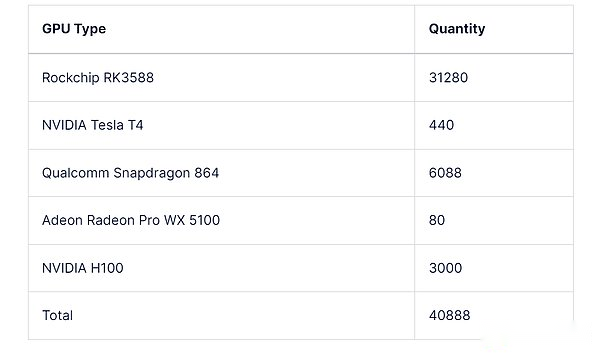
The left is the GPU model, and the right is the quantity
Social Attraction
Community support is a clear indicator of Aethir’s growing popularity, with over 170,000 followers on various social media platforms to date.In addition, with the continued growth of the Aethir platform and the increase in contracts, it is expected that Aethir will have 10 million monthly active users (MAU) in 2024.The expected user growth highlights the market’s enthusiasm for Aethir’s innovative cloud computing solutions.
Investors and Partners
In terms of investment, Aethir has successfully raised $9 million from a wide range of investors, including venture capitalists and family offices such as Animoca, Maelstorm Fund, IVC, Framework, Sanctor Capital and Merit Circle.This investment demonstrates the confidence of these entities in Aethir’s vision to change the cloud computing landscape.
Additionally, Aethir has established strategic partnerships with key players in their industry:
-
Nvidia establishes partnerships through launch program
-
Work with Well Link, the world’s largest telecom company, and other major players in the telecommunications sector (confidential as required by the agreement)
-
Work with top game studios including the world’s largest studios
-
Deploy on Arbitrum and work with key Web3 players such as Gam3s.gg and Seedify.
Fundraising activities
Seed Round (Token Round, early 2022), valuation of $60 million
Pre-Round A (Token Round, early 2023), valuation of US$150 million
Technical Differentiation
Diversity of network access:Aethir introduces a range of network access options for its container-based services.This includes point-to-point direct connection and server-assisted connection, which is suitable for a variety of operation scenarios and provides a more adaptable solution than traditional cloud rendering solutions.
Transparent evaluation framework:Aethir has established a transparent and objective evaluation framework for evaluating container specifications and the quality of services provided.This represents a shift to a more dynamic approach to evaluation, with Aethir having a system for evaluating computing power specifications, setting up a standardized application and container evaluation framework to ensure consistency across a variety of uses.Furthermore, inspectors within the network ensure quality is provided to users in a consistent manner.Finally, a comprehensive service quality assessment protocol covers the entire process from the beginning to the end of the session.
Enhanced low latency technology: Aethir has made significant progress in minimizing end-to-end latency, which is crucial to delivering a real-time cloud rendering experience.Key innovations include:
-
Use prediction algorithms such as Kalman filtering to ensure stable input of events, thereby reducing the delay by 7 to 15 milliseconds relative to competitors.
-
Implement advanced video capture technology directly from the GPU to minimize VSync latency (16.6 milliseconds at 60 frames).
-
The Region of Interest (ROI) encoding strategy is used to optimize the video encoding process on the Aethir platform, making the code rate and network transmission capabilities more balanced compared with competitors and improving the user experience.
-
The application of terminal super-resolution technology and integration of Google’s Oboe to enhance image and audio quality, further reducing users’ latency under poor network conditions, which is particularly evident in developing countries.
-
Custom adjustments to video rendering and playback to suit a variety of chips and operating systems, ensuring control over latency.
-
Hardware Access Diversity: Aethir has a wide range of hardware access, allowing it to go beyond many of the currently supported hardware sources.
The hardware ranges supported by Aethir include:
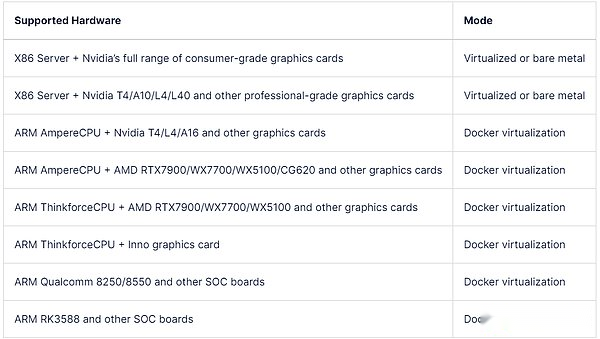
The left column is supported hardware, and the right column is mode
This strategy of Aethir enhances its cloud rendering services capabilities, enhances platform compatibility with hardware, innovative network connectivity solutions, and sound evaluation systems, while ensuring high quality and low latency for user experience.
Roadmap
Aethir’s roadmap is strategically formulated based on the rapid development of four key areas in the future:
-
Platform development: Aethir will focus on the continuous development of the platform, and the upcoming development aims to expand the scope of hardware support and improve the platform’s token economic model.The roadmap also outlines the decentralization of key roles such as inspectors and indexers and promotes GPU as a service (GPUaaS) with software as a service (SaaS) applications, aiming to consolidate the infrastructure of the platform andExpand its use case scenario.
-
Aethir Air: In the cloud gaming vertical field, Aethir focuses on optimizing gaming experience for users and developers.Innovation includes integrating the gyroscope control of the terminal device into the game, improving interactivity and providing players with a more immersive and intuitive gaming experience, such as tilting the device to turn in racing games.The additional improvements aim at in-game communication, designed to ensure smooth and uninterrupted audio communication between players.
-
Aethir Earth: Aethir Earth focuses on the bare metal business to meet the needs of large-scale customers for H100 GPUs.The roadmap envisions increasing the efficiency and flexibility of order management and resource allocation.Developing open API interfaces is the main goal of simplifying these processes, positioning Aethir as a multi-functional provider that can serve a variety of customers, from niche players to industry giants, promises to continue to grow these products over the next two years.
-
Cloud Smartphone Service: Technological advances in this field aim to establish a borderless cloud smartphone platform service (PaaS), emphasizing user security and privacy.Future developments include promoting user migration capabilities and allowing seamless cross-node data transmission within the Aethir infrastructure network.For example, users will be able to easily migrate their cloud mobile services internationally, demonstrating Aethir’s vision for global connectivity and user-centric cloud service experience.

Competitive landscape
As mentioned above, Aethir is building a distributed GPU-based computing infrastructure for dynamic enterprise use cases such as AI, gaming and virtualized computing.
Against this backdrop, Aethir will compete head-on with traditional and decentralized cloud GPU providers.The following image outlines what is currently happening in centralized providers.
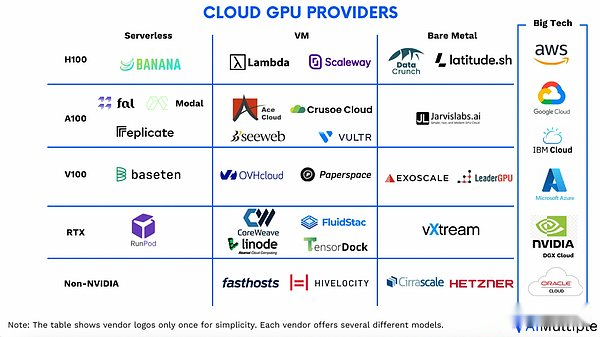
Although this section focuses on the DePin GPU space, we highlight the following major challenges faced by centralized providers that are addressed by Aethir and DePin competitors that may lead to a sustained advantage in the competition:
-
Pricing and cost structure: Centralized suppliers offer high prices and confusing price structure, especially for on-demand use.Hidden costs, such as the costs that need to be paid for both cloud providers and additional services such as NVIDIA DGX Cloud.
-
Service Availability: Some machine types of service availability is incomplete, which makes scaling of services that meet enterprise-level or powerful computing needs challenging.
-
Infrastructure and integration limitations: Some services require the GPU to be connected to specific standardized virtual machines from different providers, which can lead to inefficient setup.Limitations of integration with other cloud services or internal systems.
-
Limited GPU options and specialization: Many suppliers are highly specialized and offer limited GPU models and configurations, this solution is not suitable when flexibility is required.
On the other hand, in the decentralized competitive landscape, it is worth emphasizing the complementary role of storage-focused networks and GPU-focused networks.
In the first group, projects like Arweave and Filecoin chose not to compete in the GPU cloud computing field, but instead established synergy to complement the output of other participants in the field.On Filecoin Day 2023, the Filecoin Foundation stated that the AI that Filecoin focuses on will come from data generated by AI, and the growth of AI data will be beneficial to Filecoin.The Fair protocol is a decentralized AI model and computing market built on Arweave and will serve as a supplementary layer of unverified data for AI computing platforms, while similar logic has been established within the Aethir ecosystem.
Regarding the latter, in this report, we will focus on analyzing direct competitors in the field of decentralized GPU networks, while reviewing Render, Akash, Gensyn and io.net as benchmarks.
Render
Render Network focuses mainly on rendering services, and currently has 4367 GPUs connected to the network, representing more than 82k TFLOPS.
The latest approved Render Network Proposal 004 (RNP-004) demonstrates the initial interest of the project in leveraging Render Network nodes for AI/ML workloads.The recently approved RNP-007, RNP-008, and collaboration with io.net further demonstrates Render’s commitment to increasing network usage by providing its underutilized GPU for additional computing tasks.
Akash
As of February 2024, according to Cloudmos and Akash Stats, Akash Network currently has a capacity of 150 GPUs, including almost 100 A100 chips and several RTX 3000 and 4000 series, which is for consumer-grade AI/ML training and renderingThe mission is very useful.
In an announcement by Akash in June 2023 that it announced the establishment of a cloud GPU network, they said:
“The Akash GPU testnet has attracted the interest of vendors with NVIDIA H100, A100 and other leading data center and consumer GPU models.”
At the time of writing, H100 GPUs available for rent are not listed on the Akash network platform.
Gensyn
Gensyn.ai is a decentralized GPU network focused on AI applications.
Gensyn is built on their own network, following the Layer 1 Distrust Protocol structure.In addition, to verify and verify the computational work, Gensyn uses a combination of probability learning proof, graph-based accurate positioning protocol, and Truebit-style motivational gaming technology.Gensyn also utilizes incentives for staking and cuts to ensure honest behavior among network participants.
The Gensyn network is currently in Devnet mode and there is no public statistics on its network size.
IOnet
IOnet’s decentralized applications are built on Solana, focusing mainly on consumer and enterprise-level AI/ML.Network verification uses a time lock mechanism to ensure the quality of service provided by connected GPU vendors.
According to publicly available information, the IOnet network has been connected to more than 18k GPUs, representing more than 483k TFLOP.It is worth noting that IOnet already has 460 H100 GPUs.IOnet currently targets AI/ML engineers and companies as key users of their services.
summary
The following table highlights the design trade-offs and current network status for Aethir, Gensyn and IOnet.
It is worth emphasizing that Aethir is specially equipped with enterprise-level GPUs, and its network entry threshold is very high.Thanks to this strategy, Aethir has proven capable of reaching service agreements with major corporate clients and acquiring H100 chips.On the other hand, Io.net’s approach puts them in the lead in the original number of connected GPUs.
Finally, the efficiency of the Aethir method allows them to offer the best A100 equipment rental rates at a cost of $0.33 per hour.


Parameter performance of networks such as Akash, Render, etc.
team
-
Mark Rydon: Co-founder and CEO, Mark has held key roles at NOTA Platform, Flux Capital, Gaas LTD, Kulture Athletics, Inc. and Bechtel Corporation.
-
Daniel Wang: Co-founder and Chief Business Officer, previously served as IVC (Risk Partner), YGG SEA (Chief Information Officer), Riot Games (Director of International Publishing Management) and Riot Games China (Director of Operations).
-
Kyle Okamoto: Chief Technology Officer, Kyle has served as CEO and general manager of Ericsson’s IoT, automotive and safety businesses, CEO of Edge Gravity and Chief Network Officer of Verizon Media.
-
Paul Thind: Chief Commercial Officer, Paul currently serves as Chief Commercial Officer of Aethir, has co-founded and served as CEO of Triggerspot Inc, and has served as consultant to Creadits and Trick Studio.
Tokenomics
Token practicality
ATH tokens as the core of the Aethir ecosystem
-
As the main currency in Aethir internal transactions, it promotes payments for AI applications, cloud gaming and virtualized computing.
Governance role
-
As progress towards DAO, ATH allows token holders to propose, debate and vote for changes, highlighting Aethir’s commitment to decentralization.
Node operator pledge
-
New node operators stake ATH tokens to join the ecosystem, aligning economic interests with Aethir’s goals and demonstrating commitment to quality services.
Safety and quality assurance
-
Staking ATH tokens as collateral for misconduct may be cut in the event of misconduct to ensure users have a high-quality and reliable cloud experience.
Token allocation
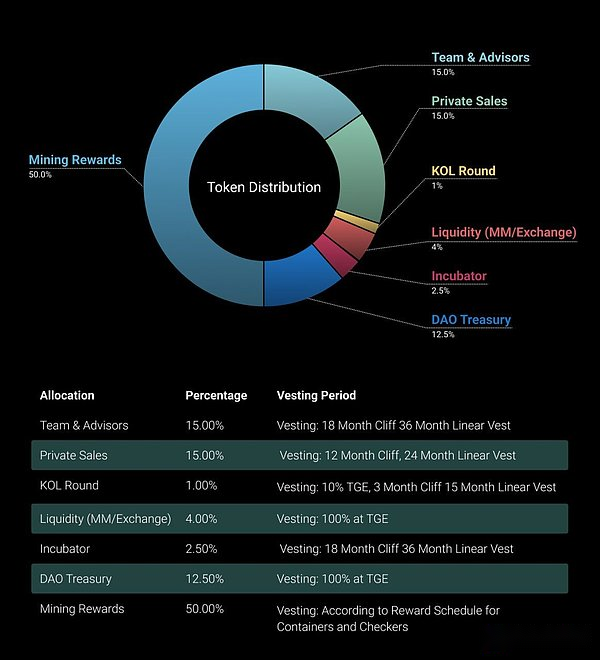
risk assessment
Token volatility
One of the main challenges inherent in the Decentralized Physical Infrastructure Network (DePIN) is the significant impact of local token price action and volatility on the supply of hardware and computing resources in the ecosystem and user demand.As supplier participants are motivated through token rewards, they face the reality that price fluctuations can greatly affect their profitability and returns.This variability also extends to the demand side, especially when payments are made with local tokens.As a result, Aethir responds to this challenge by allowing payments in fiat currencies while completing transactions in ATH tokens, ensuring that despite ecosystem growth and ATH price fluctuations, end users can still be compared with competitors in Web2 and Web3 at competitive prices.Get computing resources and services.
Network Preparation: Aethir’s approach to GPU integration
DePIN projects often encounter a growth barrier because GPU integration depends largely on consumer contributions and consumer hardware guidance, which often delays network maturity.This makes it difficult for networks that are only for retail supply to meet demand.Aethir overcomes this problem by working with institutional resource providers such as Internet Data Centers (IDCs), thus overcoming the initial network setup challenge and ensuring the ongoing availability of online nodes.This strategic move not only accelerates the maturity of the network, but also maintains high-quality service standards from the beginning.
Furthermore, while many cloud computing competitors focus on leveraging retail consumer GPUs to increase computing power, Aethir is in terms of the potential risks associated with a decline in retail GPU demand and the resulting low utilization of resources.Given that most computing needs, especially for AI training, require enterprise and organization-level GPUs, Aethir’s strategic consistency with its three core business models (cloud gaming, artificial intelligence and virtualized computing) effectively ensures thatOptimal utilization of computing resources.In addition, existing contracts with key players in the gaming and mobile industries ensure adequate balance of needs to match the resources provided.
Aethir’s dedication to execution
Execution risk is also a major issue as Aethir continues to address multiple complex challenges within the industry and balance multiple business models such as cloud gaming, artificial intelligence and virtualized computing.Despite the potential complexity that such a wide range of operations may bring, Aethir has proven its effective execution and delivery capabilities, with more than 40,000 nodes currently active in its ecosystem.Even with a record of incorporating nodes into the ecosystem, doing three different operations simultaneously is a huge feat and it will be difficult to ensure that all parts are delivered.
Summary of the key points
Global demand for artificial intelligence and Web3 solutions: Demand for artificial intelligence services is surging, especially for enterprise-grade GPUs such as the H100, with AI investment reaching $68.7 billion by 2023.This trend, along with the potential market of $600 billion, shows a promising cross-entry into the web3 AI space.Aethir stands out by bridging the gap between high-performance computing needs and web3 AI technology.
Launch the right product at the right time: The current market environment shows that there is a clear unmet need for processing power, and Aethir has proven its product market fit to meet this need.
Aethir’s strategic advantages: Aethir has successfully launched 3,000 H100s, and is expected to increase to 50,800 H100 by the second half of 2024 through the current discussion.Partnering with major telecom providers, game publishers and WellLink provides Aethir’s platform with access to potentially reaching 10 million monthly active users.
Aethir’s flywheel: Partnership drives Aethir to expect annual recurring revenue of over $20 million in Q1 2024, with an expected ARR of $114 million at the end of the year, a figure that is expected to grow as current contract size expands and new cloud computing contracts announced.By comparison, the entire DePin industry generated only $24 million in ARR.With the above partnership, it enables Aethir to increase node utilization, token demand, and further attract more contracts and investors, creating a sustainable and self-reinforced growth cycle.
Founder market fit: The founder of Aethir is an experienced manager with a track record of success in the fields of artificial intelligence, cloud computing, Web3 and gaming.
Cloud games in developing countries: Aethir uses cloud gaming to bridge the hardware price affordability gap for underdeveloped/developing regions.Focus on a large user base in Southeast Asia and South America and introduce well-known IPs to new markets, emphasizing digital inclusion and market expansion.







